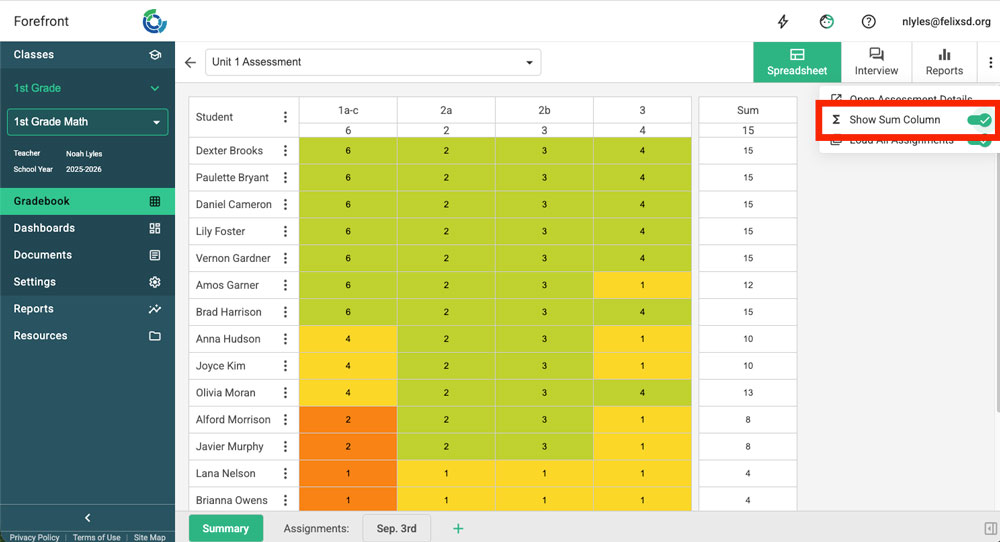This article explains why the Math Learning Center is not using an overall for their Bridges Third assessments.
Why do the assessments of Bridges in Mathematics Third Edition not include an overall score?
Bridges Third Edition scoring guides have been designed to facilitate an asset-based approach to scoring student work, with a goal of noting what students are able to do so teachers can determine how to build upon students’ current understandings. Visualizing assessment results by standards alignments provides a more nuanced look at student progress across each of the units. Examining the score for each standard offers a better picture of each student’s strengths than an aggregate score or a percentage. This kind of standard-by-standard view may also provide insights about the class as a whole that can be used to guide instructional decisions.
When teachers focus on the specific skills and concepts being taught, they are able to better see the strengths of individual students and the class as well as skills and concepts that need more reinforcement. This enables them to provide more specific feedback to students and more meaningful communication with students’ families or caregivers.
In contrast, focusing on overall performance hides students’ needs and assets.
Let’s take an example of three students who have taken an assessment with 5 questions. The first 2 questions are about addition and subtraction computation, the next two questions are measurement tasks, and the final question presents a problem situation related to finding differences in measurements. Each student gets 3 of the 5 problems correct.
Student 1 successfully completes the three measurement items, including the problem situation but makes errors on the computation items..
Student 2 successfully completes the computation and problem situation items but makes errors on the measurement items.
Student 3 successfully completes one computation item and two measurement items, but makes errors on the other computation item and the problem situation.
While all of these students have demonstrated understanding on 3 of the 5 questions, their performances are very different. By combining the results into a single score those differences are obscured. Perhaps more importantly, the successes of each student are hidden. The authors of Bridges in Mathematics Third Edition have very intentionally chosen to not include guidance on finding an overall performance level in order to encourage teachers, parents, and students to think more about the specific skills and concepts being learned. And ultimately, support everyone in learning more.
When I’m looking at a report looks as the assessment as one data point (line chart, stacked bar, student snapshot on the pacing page), what am I looking at?
To get a single data point that reflects a summary of the assessment that avoids the flaws of a points-based overall, when there is no overall, Forefront averages the proficiency of the questions of the assessment. This gives a single data point that is not skewed by point values.
For my school’s processes, I really need the total score of the assessment.
While Forefront has ways to support non-overall based family communication and non-overall based data use, there are districts with processes that use a sum. To see a sum, click the three-dot menu in the upper right and toggle on “Sum column.”
Need more support?
Submit a support request or email our team at support@forefront.education.


